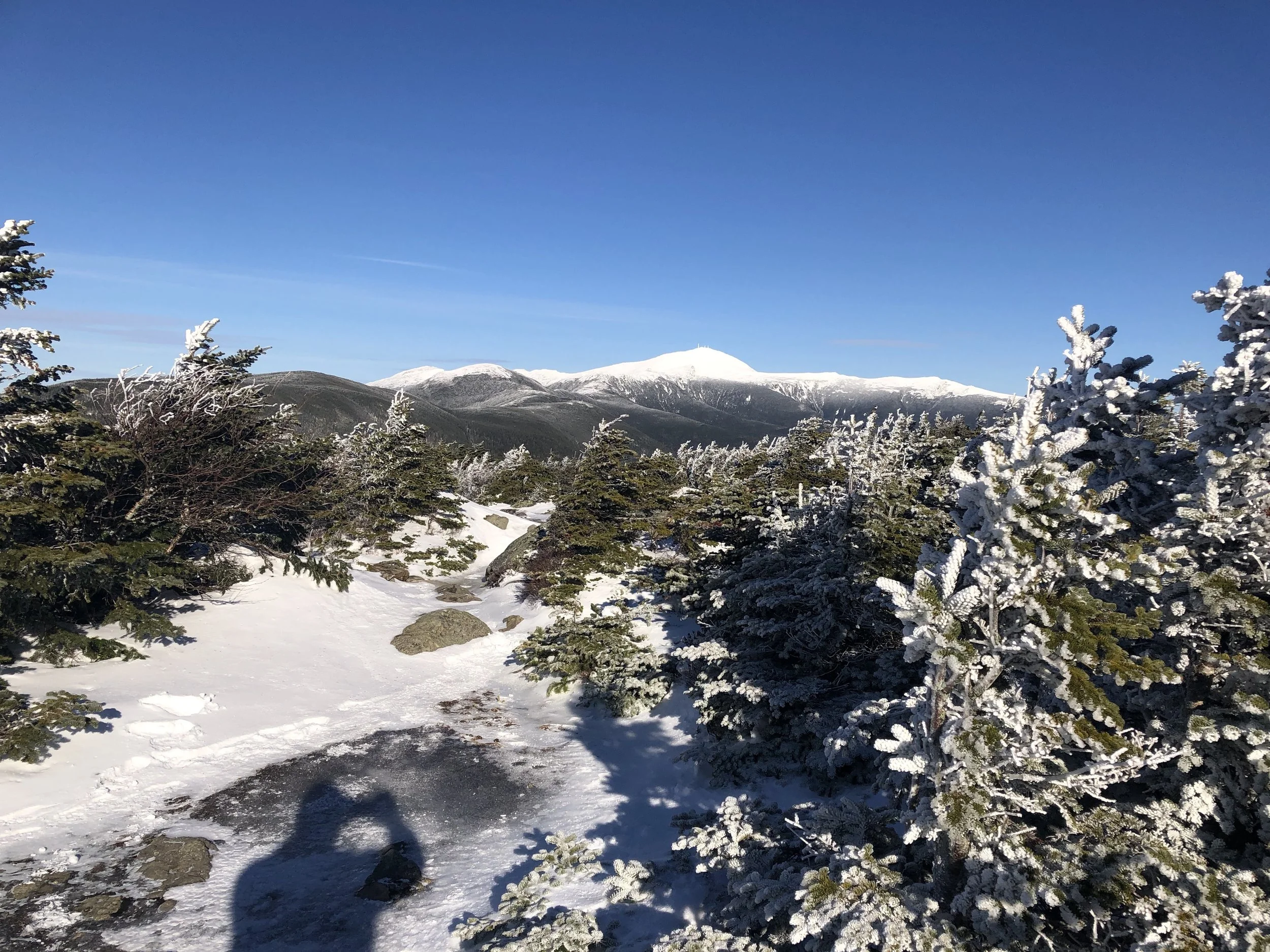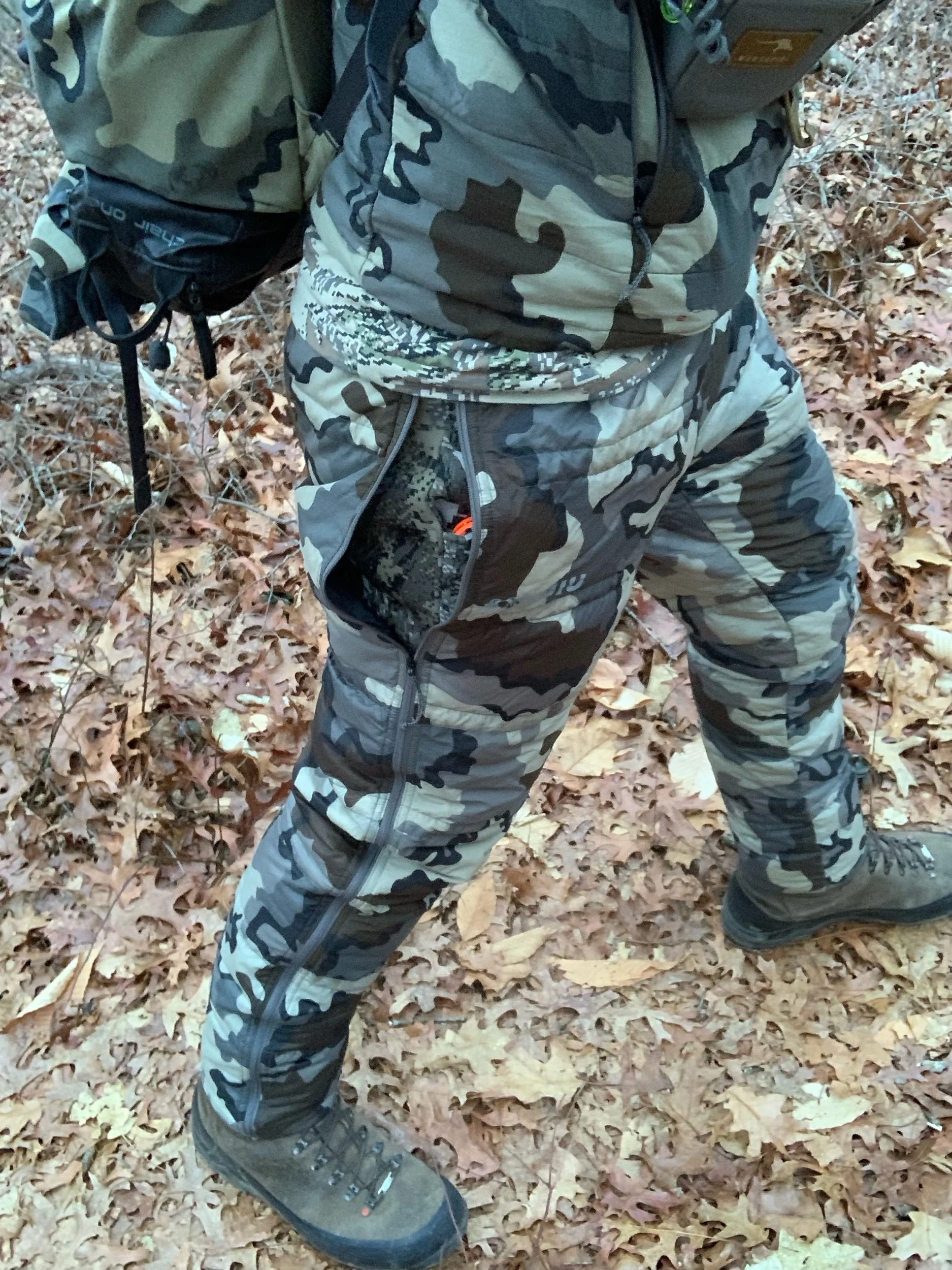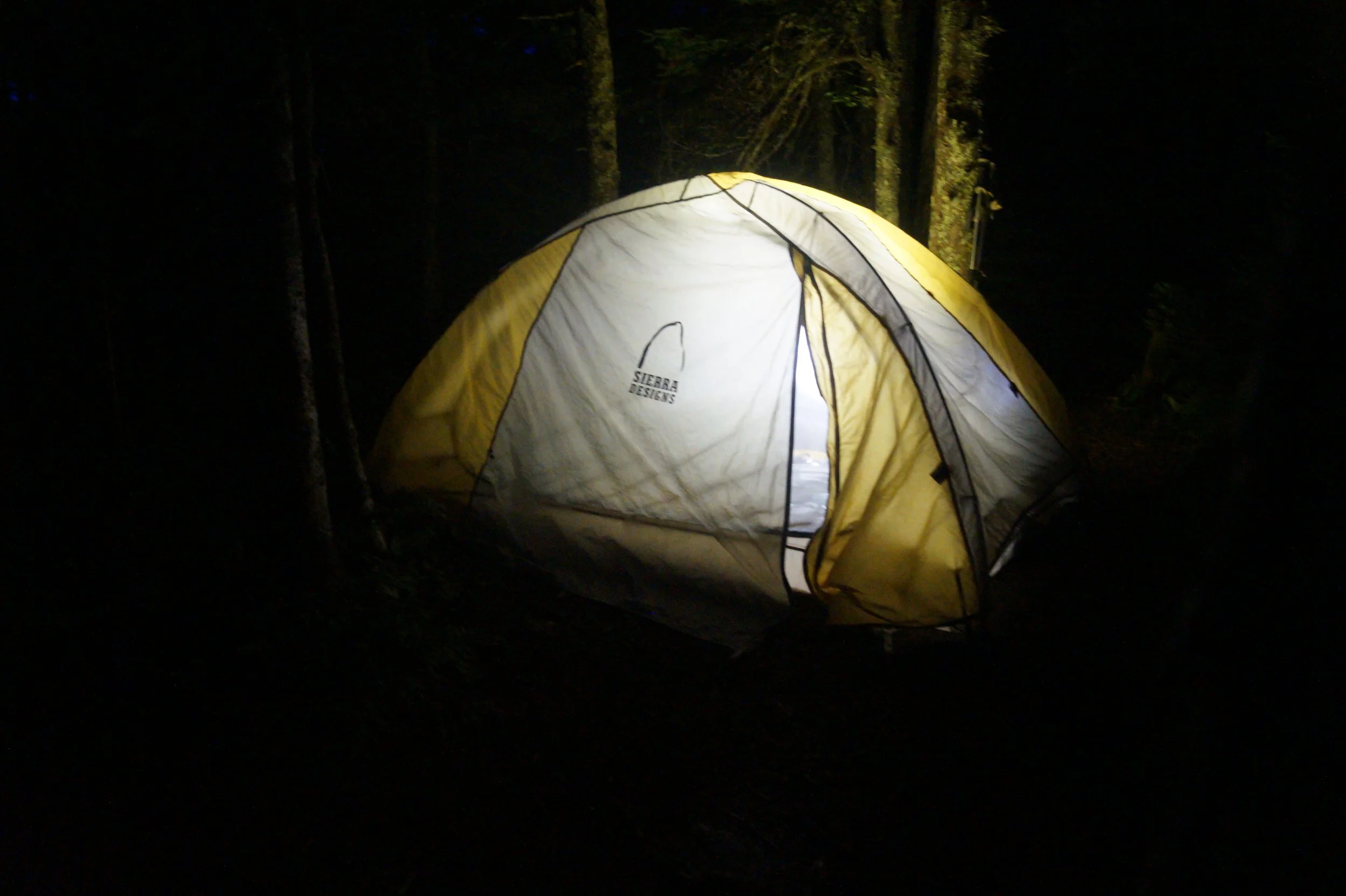Ten Essentials in My Winter Hiking Kit
Winter is here in the Whites. And so is winter hiking. I’ve had some wonderful trips recently—a trip up Garfield with Tim for a goEast Alpha Guide, a trip with Tim up Liberty, a solo trip up a very icy Webster-Jackson Trail to Mt. Jackson, another icy trip up the Crawford Path to Mt. Pierce, and then a trip up to Mt. Tom. Here are some key items that have been with me on each trip.
Trekking Poles
Ideal for staying upright on icy and rocky terrain. I look for three main features in trekking poles—a metal tip for engaging icy trails, an extended grip for adjusting my hand position on pole the fly like when side-hilling, and collapsibility so that I can pack the pole away when I don’t need it (such as when transitioning from hiking to climbing on Henderson Ridge, Boott Spur, or Shoestring Gully as well as ascending the “business” of the Winter Lion Head). For pure hiking days when the trails are icy, I’ll often bring two poles like the Black Diamond Alpine FLZ Z Pole.
A Bivy, Guide Tarp, or Group Shelter
Tim and I are writing a piece on emergency shelters for goEast, so I’ll keep this one short—I always carry some form of a shelter in the winter. Most commonly I’ll carry an old Winter Bivy from Black Diamond, a burrito-sized sleeping bag style bivy that would protect me (or somebody) from the elements in the event of an emergency. On days when I’m guiding bigger groups on Mt. Washington, I’ll carry a group shelter from Rab. If you are regularly recreating with a larger group of friends during the winter, these are sweet and definitely worth checking out.
Microspikes
Microspikes are a game changer for winter hiking in the White Mountains. Their teeth bite into the ice covering the trails providing traction with every step. In winter conditions, I just put them on at the car and forget about them, taking them off only when I get back to the car or the terrain gets technical enough that crampons make more sense. Microspikes are so much easier to hike in than crampons, and I don’t have to worry about any front points catching a pant leg. I’ve had a lot of success with Kathoola Microspikes.
A Two Puffy System
I’ve said it before and I’ll say it again—a two puffy system is ideal for winter hiking in the White Mountains. It packs better and it affords more layering options than the traditional summit puffy. For me, one of the two puffies typically has active insulation, and I’ll often wear that puffy above treeline and for portions of the descent. The second puffy stays in my pack for rest breaks and emergencies. Both puffies typically have synthetic insulation, which retains a lot more of its insulating value when wet (something that’s important with the variable weather in the Northeast).
My typical duo is the Arc’teryx Proton—either the FL (m/w) or the LT (m/w) depending on temperature—and the Arc’teryx Nuclei FL (m/w). On really cold days I’ll replace the Nuclei with the Black Diamond Stance (m) (which is uber-warm but huge) or add a puffy vest like the Arc’teryx Proton Vest (which is awesome).
Lightweight Baselayer
My upper body “action layer” is a lightweight, long sleeve base layer, preferably with a hood. My current layer of choice is the Patagonia Capilene Cool Daily Hoody. I also love the Burgeon Flume, which I reviewed here last winter.
On colder days, I’ll sometimes do a short sleeve and long sleeve combo—the Outdoor Research Whirlwind Hoody is great for this. For others, I’ll add a wind shirt like the Black Diamond Alpine Start (m/w) or Arc’teryx Squamish (m/w) or a vest like the Arc’teryx Proton Vest over the long sleeve.
On my lower body I typically wear a midweight softshell pant like the EMS Pinnacle Pant over a pair of light or midweight long underwear. My lightweight pair is a 15+ year old precursor to the EMS Lightweight Synthetic Base Layer Tight while my midweight, which I love, is the EMS Equinox Stretch Ascent Tight.
Mountaineering Boots
Mountaineering boots make a lot of sense for winter adventures in the Whites. They are warm, waterproof, great for kicking steps in snow, compatible with most crampons and microspikes, and easily crossover to other sports (ice climbing and mountaineering to name two). I rotate between four pairs from La Sportiva—the Trango Ice, the G2 Evo, the G5 Evo, and out-of-production Trango S Evo—with the G5 being my daily driver. If you love your toes, investing in a pair of warm mountaineering boots is money well spent.
A Good Thermos
Staying hydrated is a key to a successful winter hike and preventing a host of winter injuries. To stay hydrated, it really helps that my fluids aren’t frozen when I go to drink them. I’ve had a lot of success with thermoses from Hydroflask. I particularly like the 32 oz version, which is the right amount for me for shorter hikes like Pierce and Jackson.
Several pairs of gloves
I always bring several pairs of gloves on a hike. My go-to on recent hikes is a lightweight fleece pair for the below treeline section, a leather work mitt for the higher elevations, and the super-warm Black Diamond Mercury Mitt for emergencies.
My hands get the coldest at the layering transition just below treeline and during the transition from up to down (i.e., after hanging out on the summit). To keep my hands warm, I try to put on a dry pair of gloves—typically the BD Dirt Bag Mitts—at one of these transitions. Then I don’t have to worry about the damp gloves starting to chill my fingers.
A Buff
Awesome as a hat, a face mask, or a neck warmer, I bring two of these on every trip. In addition to their versatility, I love how light they are and how easy it is to slide them into a pocket or my pack. They can also serve as a makeshift bandage in a pinch.
Black Diamond Speed 30
I’ve been a big proponent of the Black Diamond Speed Series for a long time, using the Speed 22 as my main climbing pack, the Speed 30 as my do-it-all winter pack, and the Speed 50 as my backpacking pack. A durable, no-frills tube style pack that readily expands to eat gear, the Speed has the minimalistic features that I want—solid connections for ice tools, a functional crampon strap, a small, removable two-pocket brain, a rope strap, and a removable back panel—without all the add-ons that other packs have.
I’ve found that the Speed 30 is just the right size for almost all of my winter hiking adventures. It readily accommodates all the gear I just mentioned, plus my shell, a winter hat, a first aid kit (see what’s in mine here), headlamp, food, a pack or two of handwarmers, and a cell phone with a preloaded map on GAIA (especially on days that I have any navigational concerns). And the Speed 30 does so in a way that I don’t have to fret about having everything in exactly the right place, like when I’m hiking with a group and we depart a rest break a little sooner than expected.
The only time the Speed 30 feels a little small is when I’m guiding the Winter Lion Head. Between the rope, the group shelter, goggles, and an additional emergency layer or two that I usually carry, the pack starts to get a bit full. So this winter I’ll experiment with the Speed 50, while keeping a close eye on the new Black Diamond Speed 40.
By Doug Martland
All of the reviews and recommendations on The Whites Room are testing-driven and objective. We only earn money when you click on our affiliate links and purchase products. If you click on a product link on our site and make a purchase, the retailer will contribute a percentage of the sale to help support the fantastic content we are creating on The Whites Room. We appreciate your support!






